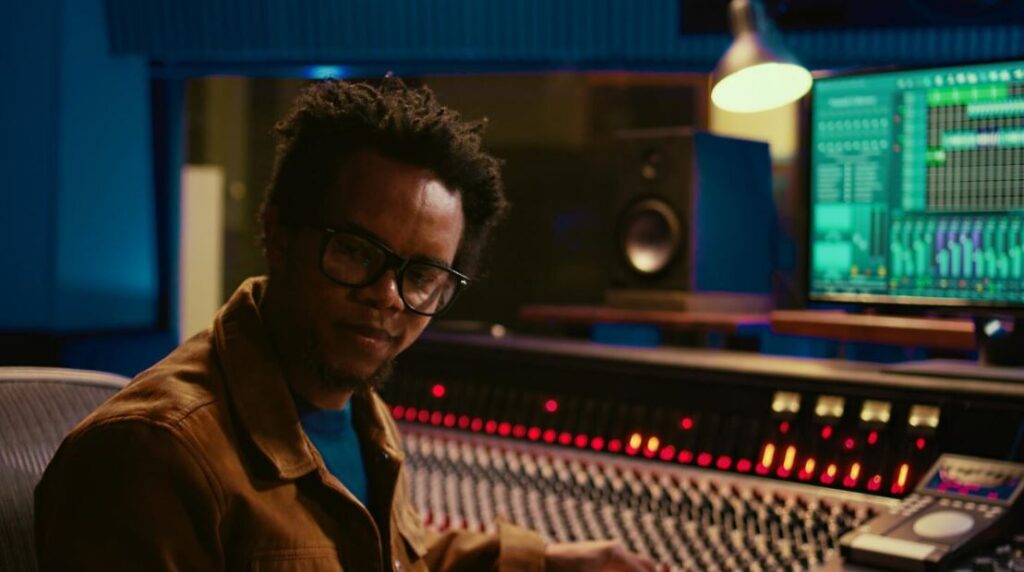
Hip hop music radio stations have remained cultural powerhouses for the past 20 years, changing formats while maintaining authenticity. Their presence is motivated by more than just current trends. These stations offer venues for musicians to do more than just release singles; they also tell tales, respond to inquiries, and foster relationships. There is no substitute for the human interaction that occurs when someone like J. Cole sits across from a radio host and considers his creative process.
Many people thought traditional radio would become less popular as streaming platforms gained popularity. Rather, hip hop stations gained new traction by fusing digital reach with local loyalty. They have remained remarkably relevant by incorporating apps, live streaming, and on-demand playback. In fact, by emphasizing local identity and elevating voices from around the world, some stations have gained even more clout.
Influential Hip Hop Music Radio Stations and What Makes Them Stand Out
| Station Name | Location or Platform | Key Features and Format Style |
|---|---|---|
| HOT 97 | New York City, FM/Online | Known for iconic freestyles, artist interviews, and live Summer Jam events |
| Power 105.1 | New York City, FM/Online | Home of The Breakfast Club, merges music with impactful interviews and cultural debates |
| KMEL 106.1 | San Francisco, FM | Particularly strong with local talent and Bay Area exclusives |
| BBC Radio 1Xtra | UK Digital | Promotes UK rap, grime, Afrobeat, and underground talent with exceptional clarity |
| Capital XTRA | UK DAB/Digital | Balances American and UK hip hop with highly efficient programming and fresh DJs |
| Real 92.3 | Los Angeles, FM/Online | Celebrates West Coast artists and delivers hip hop radio with unfiltered style |
| Hot 108 Jamz | Global Online | Streams 24/7 with a remarkably effective blend of current hits and classic hip hop |
| 93.7 The Beat | Houston, FM | Spotlighting Southern hip hop with authentic street energy |
| Reprezent 107.3 FM | London, FM/Digital | Youth-led, particularly innovative in its artist development and local scene focus |
| Powerhitz 1Power | New York Streaming | Curated Top 40 hip hop mixes with consistent energy and chart-forward rotation |
When it comes to setting the mood, HOT 97 in New York is still incredibly dependable. For many artists, its Summer Jam performances have been pivotal events. Funk Flex freestyles and other on-air segments are frequently career-defining in addition to being entertaining. A recent episode demonstrated how radio still has the ability to create momentum when an unknown Brooklyn rapper’s surprise freestyle received millions of views in just 48 hours.
In a similar vein, Power 105.1’s Breakfast Club has emerged as a popular venue for actors, politicians, activists, and rappers. In order to provoke thought-provoking discussions, Charlamagne Tha God and his co-hosts frequently combine humor with cultural commentary. Millions of people felt alone during the pandemic, but these open discussions offered comfort, motivation, and a sense of belonging.
On the opposite side of the nation, West Coast voices with a unique style are still being featured on KMEL in San Francisco and Real 92.3 in Los Angeles. In addition to honoring icons like Snoop Dogg, these stations promote artists like Larry June and Bino Rideaux. Many independent artists would not have been discovered through Spotify’s worldwide filters, but KMEL’s dedication to Bay Area authenticity has significantly increased their visibility.
UK radio stations like Capital XTRA and BBC Radio 1Xtra have been instrumental in bringing hip hop to a wider audience in recent years. They have developed a varied, inquisitive, and very involved audience by organizing shows centered around spoken-word fusion, drill, grime, and Afro-swing. Their support has been crucial to the success of artists like Dave and Little Simz. By airing stories that are remarkably similar to those from the Bronx or Compton but have a distinctively British cadence, these stations act as links between communities and countries.
Stations run by young people, such as Reprezent 107.3 FM, have been especially creative. Through the integration of regional educational initiatives and artist training sessions, they have established a novel approach to community involvement. In addition to fostering trust, this strategy has given up-and-coming DJs, producers, and emcees new opportunities. Their playlists feel more like personal touches than pre-programmed ones because of the genuineness of their programming.
Hot 108 Jamz and Powerhitz 1Power, which were the first stations to broadcast online, have quickly and accurately adjusted. They respond to current trends in real time by updating their playlists on a daily or occasionally hourly basis. They have developed into extremely effective platforms for viral success by utilizing quick feedback loops. These stations quickly pick up on it and deliver it to audiences with purpose and energy, whether it’s a TikTok-driven hit or a surprise drop from Travis Scott.
Hip hop radio’s heartbeat is what makes it unique. It is audible during late-night call-ins. It’s evident during spontaneous freestyles. And you get to experience it through DJs who intentionally, rather than automatically, blend tracks. Radio is still unpredictable. You might tune in for a Drake song and then stay for the first song by a local artist. That surprising finding is still one of radio’s most potent instruments.
Hip hop stations are reaching a wider audience by working with labels, music festivals, and nonprofit organizations. They have incorporated community-building into their missions through everything from charity events to youth mentorship programs. These collaborations give their broadcasts more weight because they’re investing in futures rather than just spinning records.
Hip hop radio’s continued existence in the upcoming years will be determined by its soul rather than its size. Stations that continue to support voices, honor cultural traditions, and carefully amplify stories will prosper. Playlist algorithms haven’t been able to satisfy the connection that listeners, particularly younger ones, crave. They still get that from radio.
